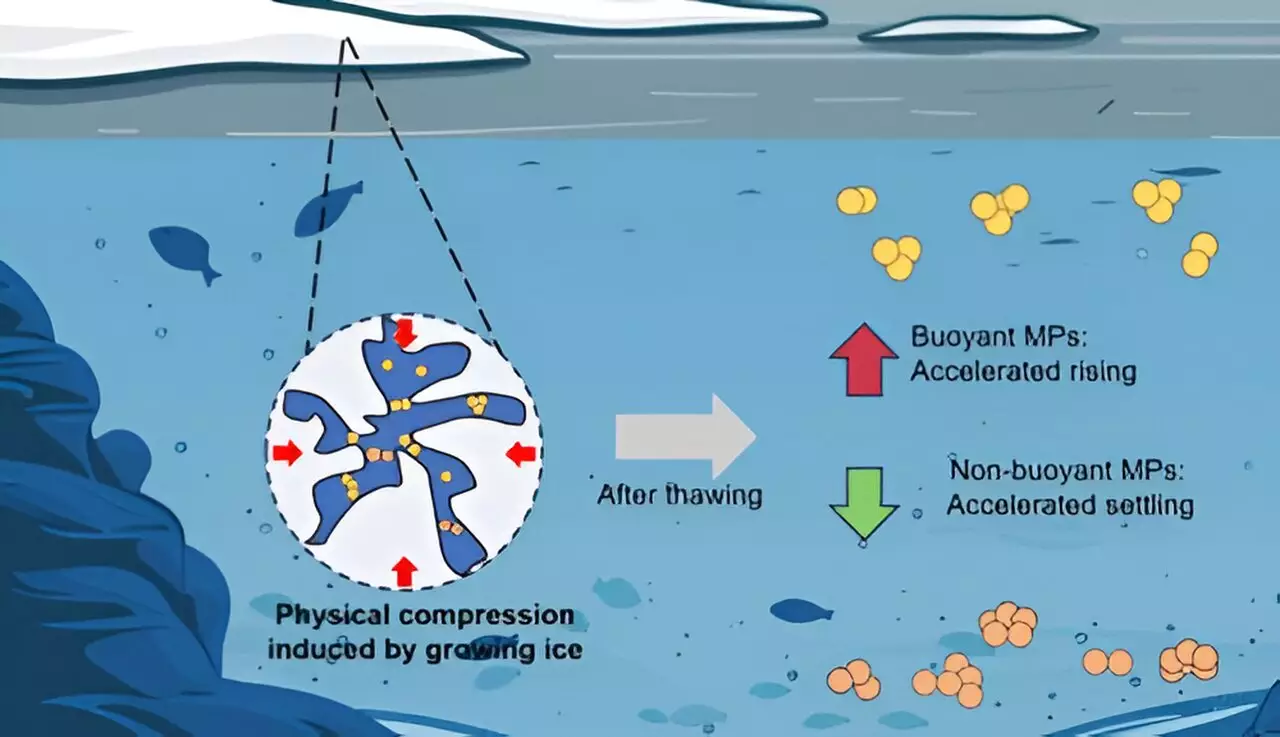Microplastics have become an alarming ecological concern, permeating ecosystems from the deepest oceans to the most pristine lakes and rivers. These minuscule plastic particles, typically less than 5 millimeters in size, have various origins—ranging from clothing fibers to the degradation of larger plastic debris. What’s lesser-known is their fate when introduced to frozen environments. A recent study published in *Environmental Science & Technology* sheds light on how the freezing and thawing process can dramatically alter the behavior and environmental impact of microplastics in aquatic systems.
The research, led by Chunjiang An and colleagues, examined various polymer types—specifically polyethylene (PE), polyurethane (PU), and polytetrafluoroethylene (PTFE)—to understand their respective movements and alterations in freshwater and saltwater conditions. Each polymer manifests unique behaviors due to its density relative to water. For instance, PE typically floats due to its lower density, while the denser PU and PTFE tend to sink. This difference in buoyancy is crucial because it dictates where microplastics will reside—either at the surface, where they can affect wildlife, or settled at the bottom, impacting sediment and potentially entering the food chain through benthic organisms.
In the team’s experiments, they subjected microplastic particles to freezing conditions for 24 hours, observing notable changes upon thawing. The study found that upon thawing, the size of PE particles increased by an astonishing 46%, while PU saw a lesser increase of 9%. This disparity suggests a complex interaction between polymer properties and environmental conditions during freezing. Notably, changes in salinity altered the freezing effects: in saltwater, no significant size change was observed, which could be attributed to the presence of brine channels in the ice allowing particles to avoid compaction.
This phenomenon highlights a crucial aspect of microplastic behavior in frozen environments. It poses questions about how variations in seasonal climate and water temperature could influence the dynamics of these contaminants.
Digging deeper, the researchers explored the mechanics behind the observed behaviors of these microplastics. When subjected to the forces of gravity, buoyancy, and drag, it became apparent that the freeze-thaw cycle plays a pivotal role in particle distribution. The increased buoyancy post-thaw likely leads PE particles to rise more swiftly, while denser PU and PTFE particles end up settling more rapidly at the lake or ocean beds.
The implications of this dynamic are significant; rapid freezing could encourage a greater deposition of microplastics in sediments, potentially increasing the detrimental effects on aquatic ecosystems, as bottom-dwelling organisms ingest these pollutants alongside their food.
Natural Freezing Processes vs. Laboratory Conditions
Importantly, the conditions in the laboratory setting do not entirely mimic natural environments, where ice can persist for months to years. The study acknowledges that their shorter freezing duration might not encompass the full scope of effects that prolonged freezing may have on microplastics. Actual freezing processes in nature could lead to even more pronounced alterations in microplastic behavior, resulting in further sedimentation and ecological impacts.
This discrepancy emphasizes the need for comprehensive long-term studies that simulate natural freezing cycles. Understanding the full range of microplastic interactions within frozen bodies of water is critical to establishing accurate environmental assessments and remediation strategies.
The research conducted by Chunjiang An and his team provides a foundational insight into how freezing influences microplastic dynamics. The findings reveal that physical changes in microplastics can lead to altered sedimentation rates, potentially aggravating pollution issues in freshwater and marine ecosystems. As climate change continues to affect seasonal freezing patterns, this work underscores the urgency of addressing plastic pollution with nuanced, adaptive management practices that consider the evolving behaviors of these persistent pollutants in response to environmental changes. The complexity and reach of microplastics necessitate continuous research to ensure that our understanding keeps pace with the ongoing environmental challenges they pose.


Leave a Reply